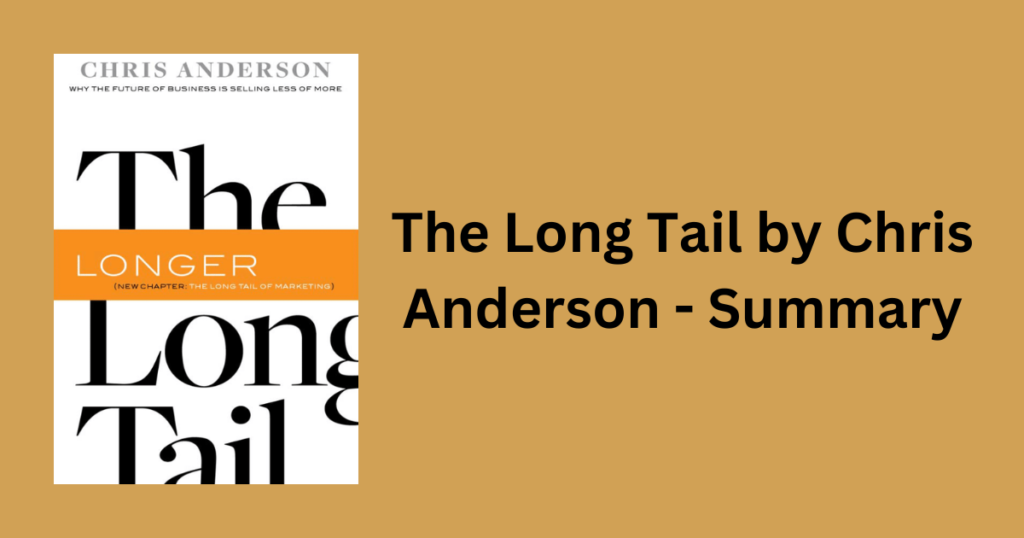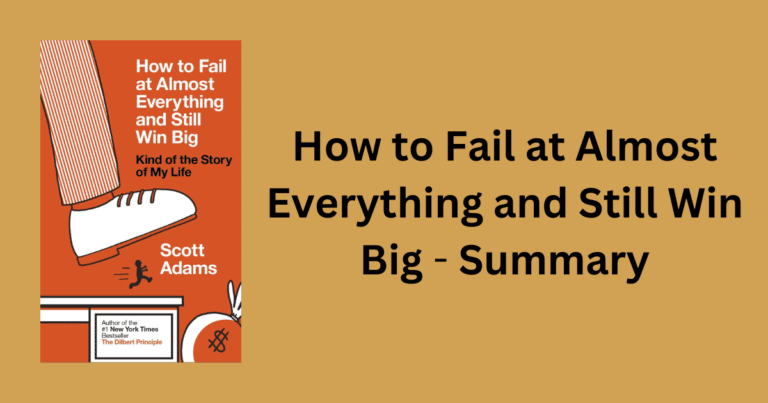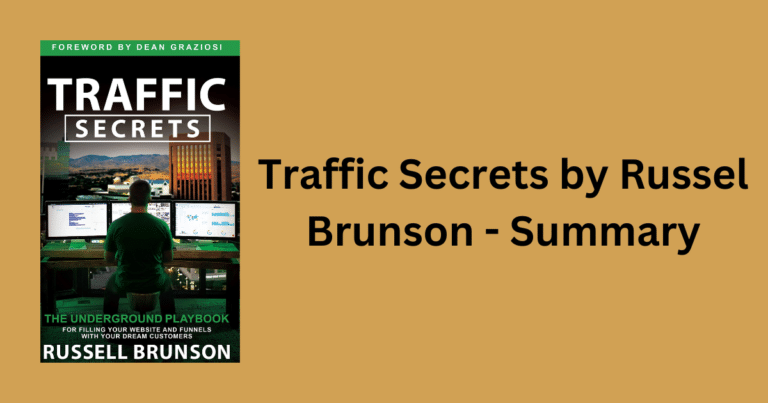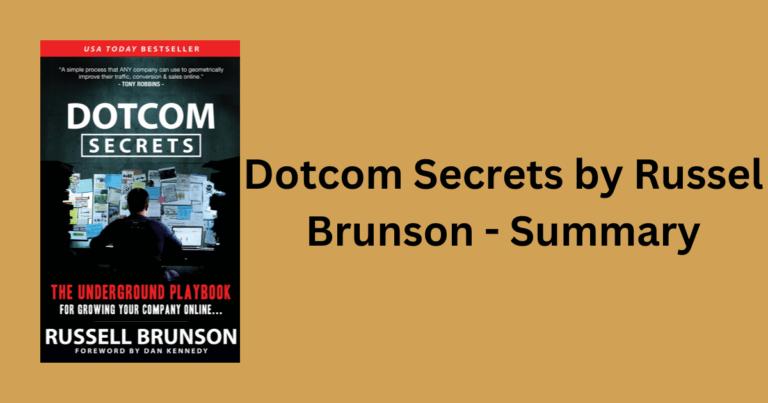A Brief History of The Longtail
The Long Tail by Chris Anderson: Why the Future of Business Is Selling Less of More. It’s a book that talks about the history of The Long Tail and where we are heading. Jeff Bezos coined the term’ The Long Tail and Chris Anderson wrote a book about it.
We obsess over hit’s what’s hot and what’s not and the rise and fall of them. The mass market is now turning into a mass of niches. Hits are great, but niches are emerging as the new big market. We had a relatively small pool of hit content. You either made it or you didn’t. know it’s no longer the case.
In traditional retail, what’s going to sell a lot is what mattered. Here they weren’t interested in the infrequent sellers. They wasted space, and space counts for money. The Retail Stores would only store the hits and the Top of the Mark products. Retailers were leaving so much money on the table because they could only accommodate so much.
This was the breakthrough that led to companies such as Amazon, Netflix, and iTunes. Here space costs nothing, and you could look at the infrequent sellers again. This was the birth of The Long Tail.
The Economics of the traditional market soon ran out of steam and gave way to the digital space. The Era of One Size fits all was on the decline, and the market of niches was on the rise. The culture has shifted from following the crowd to finding your own style.
What happens when everything becomes available to everyone? The Long Tail. You are now no longer bound to a few select options but can make your decisions based on a plethora of choices.
The availability of The Long Tail economics became clear through the databases of Google, Netflix, Amazon and iTunes.
The idea of the long tail is to not try to cater to everyone. You don’t have to serve the masses you just have to have a small devoted audience to have success.
The Long Tail by Chris Anderson Explained
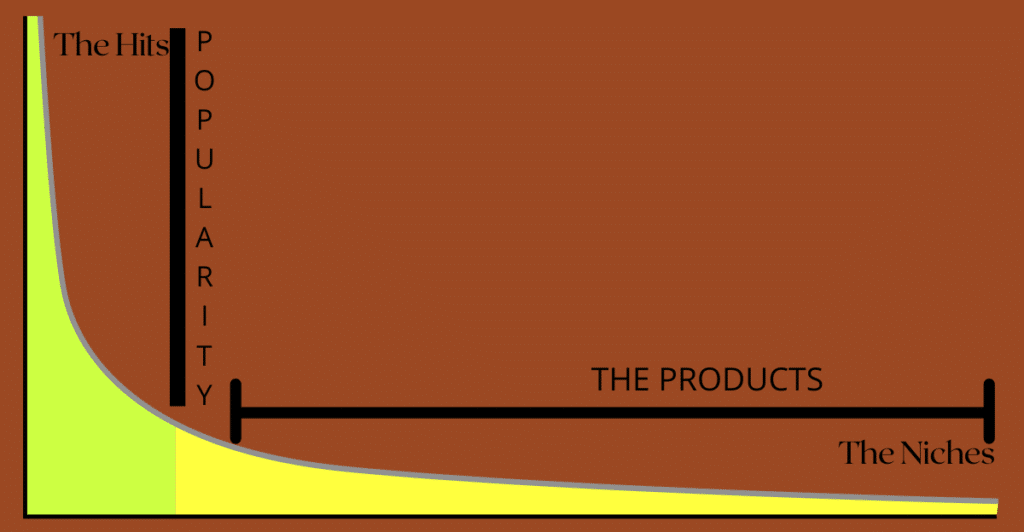
Think of the X-axis as the products and the Y-axis as the sales or popularity. Now the left-hand spectrum represents the hits, while the right-hand spectrum represents a niche audience.
The Head comprises the top sellers, record hits and blockbuster movies.
The left end does the most sales and is highly popular, but that doesn’t mean you neglect the right end. The curve seems to taper as the rank goes down, and this is the long tail. Do not ignore the long tail. The riches are in the niches.
There are clearly more niche goods than there are hits, and the aggregate of the niche goods could be equal to or even more than the hits. The Tail, when aggregated, leads to a significant market. Smaller things have a larger scale impact.
The cost of reaching those niche goods is falling dramatically, and we must give consumers ways to find them via recommendations and filters.
The demand curve is flat but infinitely long. With The Long Tail people actually search for what you are offering, rather than you telling them this is what I do.
Netflix, Amazon and iTunes are always ahead of the brick and mortar stores because they have a wide range of products that aren’t available in the physical retail stores (niche good’s). It’s funny, but we always want something that’s not available or something we don’t have.
Most of our potential customers lie somewhere along the tail. Our job is to find them.
The Breakthrough
For the first time in history, both the hits and misses are on the same economic footing. Both are equally worthy of being carried. The Quest for mass market acceptance is no longer the norm.
Long Tail products not only account for most of the sales but because they’re often cheaper to acquire, they can be very profitable as long as we keep inventory costs to a minimum.
The Breakthrough of The Long Tail occurred in these major stages.
- Amazon changed the Books Industry (Physical goods)
- Netflix changed the movies and television industry
- iTunes changed the music industry (Digital goods)
- Google changed the advertising industry (advertising services)
The major rules of the long tail is to make everything available to everyone and help people to find it. The above mentioned companies follow this principle to perfection.
Long Tail in action
In 1988, a mountaineer Joe Simpson wrote a book touching the void. His near fatal but successful climb of the Peruvian Andes. It was a modest success, but soon forgotten.
A decade later John Krakauer wrote a book into thin air another mountain climbing thriller. It became a publishing sensation and suddenly, touching the void which didn’t see the light of day for years started to sell again.
By mid-2004, touching the void began outselling into thin air by 2 to 1. The reason? Online word of mouth led to this phenomenon. When into thin air came out, people who had read touching the void wrote reviews that pointed out the similarities.
What’s popular today might be defunct tomorrow, and what’s not popular today might be tomorrow’s sensation. This is the underlying principle of the long tail.
More than a quarter of Amazon’s book sales come back from outside of its top 100,000 title’s. 70% of the books are long-tailed.
The Future
The Barriers of entry has significantly reduced compared to a couple of decades ago. People now can create. The PC has levelled the playing field. Everyone now can be a producer or a publisher, with the internet serving as the distributor. The tools of production are now transparent and everyone can create. The middleman no longer exists.
News has left the paper age, podcasting has taken over radio and even I read this book on my computer screen. Who Knows What the Future Holds?
